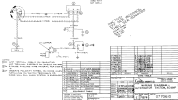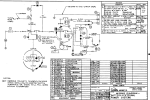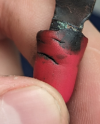Good morning,
Have a Cessna 182H that recently went through a panel upgrade last winter which included a GNC355, a GMA345, and two GI275s with vacuum system removal. For the first 30 or so hours after the upgrade everything was fairly trouble free, so issue might be totally unrelated.
Back in June I started noticing the ammeter jumping into discharge intermittently. Flickers down about an 1/8th to quarter inch into discharge then comes back to center. No circuit breakers are popped. This even happens with all electrical load save for 275s shed as well. So far we've checked wiring, then replaced voltage regulator with new Lamar unit, and then put in a refurbished alternator from aerotech. Sometimes the aircraft operates without any flickering of the ammeter into negative at all, but now the issue is back again.
Any additional troubleshooting tips would be very much welcome. Has anyone experienced this before?
Have a Cessna 182H that recently went through a panel upgrade last winter which included a GNC355, a GMA345, and two GI275s with vacuum system removal. For the first 30 or so hours after the upgrade everything was fairly trouble free, so issue might be totally unrelated.
Back in June I started noticing the ammeter jumping into discharge intermittently. Flickers down about an 1/8th to quarter inch into discharge then comes back to center. No circuit breakers are popped. This even happens with all electrical load save for 275s shed as well. So far we've checked wiring, then replaced voltage regulator with new Lamar unit, and then put in a refurbished alternator from aerotech. Sometimes the aircraft operates without any flickering of the ammeter into negative at all, but now the issue is back again.
Any additional troubleshooting tips would be very much welcome. Has anyone experienced this before?






